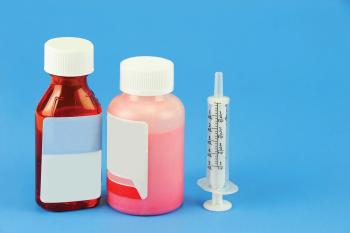
- Pharmaceutical Technology-04-02-2014
- Volume 38
- Issue 4
Drug Encapsulation for Patient-Centric Dosing
Encapsulation technologies for solubility/bioavailability enhancement, controlled release, and formulation of drug combinations and patient-friendly dosage forms.
The global pharmaceutical industry loses an estimated $564 billion annually due to medication non-adherence (1). The development of innovative products, custom-made for specific patient populations and indications, is the first step towards increasing patient compliance and improving treatment outcomes. In general, such dosage forms incorporate user-friendly elements to support product marketing and differentiation. Much development effort in the industry is currently being applied to patient-centric drug delivery, including bioavailability enhancement to provide equivalent therapeutic action at lower doses (and to reduce adverse events); customized drug release to influence efficacy and safety and lower dosing frequencies; drug combinations to reduce the number of medications taken; and patient-friendly dosage forms to enhance patient acceptability of the medicines and to customize dosage forms for specific patient populations and/or indications. These objectives can be achieved by the use of drug-encapsulation techniques. This article reviews the key attributes of patient-centric dosage forms in relation to drug-encapsulation technologies.
Multiparticulate systems
The pharmaceutical industry has long recognized the advantages of multiparticulate systems for improving pharmacokinetic behavior and enhancing bioavailability of formulations. Compared to monolithic devices, multiparticulates have less variable gastric emptying, show lower inter- and intra-subject variability, minimize the risk of dose dumping, and better facilitate customized drug release.
Microencapsulation can be defined as a process by which particles of solid or liquid material (the core) are enveloped with a continuous film of polymeric material (the shell) to produce capsules in the micrometer or millimeter range. Microencapsulation can be achieved using a number of chemical or physical techniques, including interfacial polymerization, extrusion spheronization, spray drying, and solvent evaporation to name a few.
Interfacial polymerization involves the polymerization of a monomer at the surface of two immiscible liquids (water and an organic solvent). Monomers are dissolved in the two separate phases, which are emulsified to reach the desired particle size. The monomers polymerize at the interface of the emulsion droplets, thereby encapsulating the drug.
Extrusion spheronization is a two-step process in which the drug and excipients are combined and then extruded, followed by spheronization of the extrudate to round out the particles. Hot melt extrusion (HME) is now being used to disperse APIs in a matrix at the molecular level, thus forming solid solutions/dispersions to enhance drug dissolution. Spray drying is a low-cost microencapsulation process and is widely used for fragrances and flavors. Drug particles are dispersed in a polymer solution and sprayed into a hot chamber, and the polymer solidifies onto the core particles as the solvent evaporates. Solvent evaporation is a common technique in which the drug is either dissolved or dispersed in an aqueous phase combined with a polymer in an organic solvent to create an emulsion, and the solvent is subsequently evaporated to yield the microspheres.
Another method is coextrusion (Ethicap gel technology, Freund Pharmatec), which can be achieved by the use of vibrational force to drive materials through concentric nozzles to create droplets that subsequently form seamless minicapsules by surface tension in a collection medium. Drug encapsulation allows for the conversion of liquids to solids to support downstream processing, accommodates solubility-enhancing formulations and controlled drug release, and can improve drug stability.
Solubility and bioavailability enhancement
More than 40% of oral drug products contain poorly soluble drugs (2). It is estimated that up to 90% of new molecular entities fall under the BCS class II or IV category, showing poor and variable oral bioavailability in vivo (3). BCS Class II compounds have poor aqueous solubility but reasonable permeability, so the rate limiting step for absorption is drug dissolution. Numerous techniques have been developed to address the issue of poor solubility and bioavailability with varying degrees of success. The main technologies to target oral bioavailability for poorly soluble drugs include the use of micronization, nanosizing, crystal engineering, solid dispersions, cyclodextrins, solid lipid nanoparticles, and other colloidal drug delivery systems, such as microemulsions, self-emulsifying drug delivery systems, self micro-emulsifying drug delivery systems, and liposomes (4). In recent years, the development of amorphous solid dispersions by HME has yielded one of the most effective technologies for oral bioavailability enhancement (5).
Improvements in drug solubility in microencapsulated systems are attained firstly by the multiparticulate nature and corresponding increased surface area, which can increase drug release and subsequent dissolution. Secondly, some microencapsulation techniques allow for the incorporation of solubility enhancers in the formulation or may use process temperatures above the melting point of the drug to create an amorphous form. A combination of formulation additives and temperatures above the melting point can be applied in some cases when using HME or coextrusion techniques. This combined approach can result in improvements in solubility even greater than the nanocrystalline form of certain BCS Class II compounds. Using the coextrusion method, a three-fold increase in aqueous solubility in vitro was observed for a selected compound as compared to the nanocrystalline form (see Figure 1).
Numerous case studies have been reported in the literature on the use of HME to improve oral bioavailability of poorly soluble drugs. Fule and Amin developed immediate-release solid-dispersion formulations of the anti-ulcer drug lafutidine using a HME technique (6). Polyvinyl caprolactam-polyvinyl acetate-polyethylene glycol graft copolymer (Soluplus, BASF) was used as the primary solubilizing agent, with different concentrations of selected surfactants, such as PEG 400, Lutrol F127, and Lutrol F68, to investigate the influence of these surfactants on formulations processed by HME. Dissolution rate and solubility of lafutidine was enhanced remarkably in the developed solid dispersion formulations. The ratio of polymer to surfactants played a crucial role in dissolution rate enhancement of lafutidine and overall, the application of HME proved successful in enhancing in-vitro dissolution.
Controlled release
For some microencapsulation techniques, controlled release of the drug can be accomplished through the encapsulation method itself or by subsequent coating onto the encapsulated drug particles. Multiparticulates typically provide a good substrate for the application of polymer coatings using conventional techniques such as fluid-bed coating. Major advances in polymeric coatings have allowed for customized drug release based on pH changes or timed-release functions, but coating efficiency and performance is dependent on a number of factors, including particle shape and size distribution. The different microencapsulation processes available show variable shape and size distribution properties, which can affect coating efficiency.
Gowda et al. used spray-drying to prepare controlled-release microparticles of indapamide and reported that this approach achieved a 24-hour profile comparable with the marketed product, Lorvas (Indian Market) (7). Selected polymers were used to provide the controlled-release functionality. The authors concluded that the application of spray-drying in combination with the selected excipients allowed for the development of a controlled-release formulation of a highly water-soluble drug.
For coextruded minicapsules, their spherical shape and narrow particle size distribution (within 3% by weight) can facilitate uniform application of polymeric coatings (see Figure 2). In this case, a methacrylate sustained-release coating was applied to a minicapsule containing a BCS Class II drug. High coating efficiency on multiparticulates can result in sustained-release action comparable to specifically designed sustained-release devices such as osmotic pump systems (see Figure 3).
Drug combinations
Treatment regimens that require multiple products are a significant burden on patients, and compliance decreases with an increase in the number of products administered. The most common drug combinations are the fixed-dose combination (FDC) products in which two or more drugs are combined in a single dosage form at specific doses. The first FDCs were combinations of anti-retroviral drugs for the treatment of HIV/AIDS, but other combinations followed as treatments for a single condition or multiple conditions (e.g., Pfizer’s Caduet containing atorvastatin and amlodipine). A key advantage of FDCs is improved medication compliance by reducing the pill burden of patients. Pill burden refers not only to the number of pills to be taken by the patient, but also the burden of understanding the various instructions of several medications.
The main issue in the formulation of FDCs is the chemical incompatibilities between drugs. A commonly reported interaction is between rifampicin and isoniazid (drugs used in the treatment of tuberculosis) at stomach pH, leading to poor stability and bioavailability of rifampicin. Extrusion spheronization was used to formulate enteric-coated pellets of rifampicin and isoniazid. The formulation showed improved stability for rifampicin in in-vitro conditions (8). Using the coextrusion encapsulation technique, the concentric nozzle design allows for up to three layers within the minicapsule. A median layer can, therefore, act as a physical barrier between drug layers (see Figure 4). This technique can eliminate the issues associated with incompatibilities, thereby facilitating the development of stable FDC products.
Patient-friendly dosage forms
Patient-friendly dosage forms provide clear benefits for specific patient populations, including geriatric and pediatric groups, patients with dysphagia, or those with neurodegenerative diseases. One way to enhance patient compliance is to create dosage forms that are easy to take, and multiparticulate systems can enable various options for user-friendly presentations. Multiparticulates can be formulated as dry syrups or sprinkles that may be added to food, orally dispersible tablets or granules (ODT/ODG), and liquid formulations. Such dosage forms may require taste-masking and/or controlled drug release and should be easy to swallow. As an example, the spherical nature of coextruded seamless minicapsules eases swallowing. Taste-masking functionality can also be incorporated into the shell of the minicapsules, which can in some cases, eliminate the need for further coating.
Other proprietary technologies use microencapsulation methods to taste-mask bitter compounds, which is especially important for the pediatric population. For example, the Aptalis’ proprietary Microcaps coacervation process was used to create an oral taste-masked granulation formulation of tenofovir disoproxil fumarate (Viread), which can be administered by mixing with food for enhanced compliance in pediatric patients.
In the development of new products, line extensions, and differentiated generics, consideration of patient compliance is vital for improving clinical outcomes, reducing the cost burden of many diseases, and moderating the losses experienced by the industry due to non-adherence. Multiparticulate systems can solve formulation problems and allow the formulator to develop a convenient and user-appropriate dosage form.
References
1. Capgemini Consulting, “
2. C.A. Lipinski et al., Adv Drug Deliv Rev 46 (1-3) 3-26 (2001).
3. F. Kesisoglou and Y. Wu, AAPS J 10 (4) 516-525 (2008).
4. A. Fahr and X. Liu, Expert Opin Drug Deliv 4 (4) 403-416 (2007).
5. J.C. DiNunzio et al., Pharm Technol, Drug Deliv Supp, s30-s37 (2010).
6. R. Fule and P. Amin, Asian J Pharm Sci., online, DOI 10.1016/j.ajps.2013.12.004 (Dec. 31, 2013).
7. D.V. Gowda, M.S. Khan, and R. Nagendra, Int J Pharm Bio Sci 1 (4) 459-466 (2010).
8. V. Krishna and M.S. Reddy, Asian J Pharm Clin Res 7 (Suppl 1) 154-156 (2014).
About the Author
Joan FitzPatrick is director of Business Development and Scientific Affairs at Freund Pharmatec, Unit 1, IDA Business & Technology Park, Srah, Tullamore, Co. Offaly, Ireland, email:
Articles in this issue
almost 12 years ago
Drug Discovery Partnerships between UK CROs and the Swiss Pharma Sectoralmost 12 years ago
SyncOperations Software Helps Increase Workflowalmost 12 years ago
The Benefits of eClinical Systems in Supply-Chain Managementalmost 12 years ago
Navigating the Regulatory Landscape of Combination Productsalmost 12 years ago
Increased Efficiency Key to Competitiveness in Downstream Bioprocessingalmost 12 years ago
Publishing Beyond the Printed Pagealmost 12 years ago
Global Instability Affects the Pharma Market in BrazilNewsletter
Get the essential updates shaping the future of pharma manufacturing and compliance—subscribe today to Pharmaceutical Technology and never miss a breakthrough.




